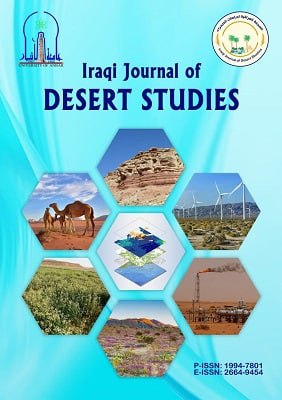Abstract
Wheat is the most important cereal crop on which more than half of the world's population depends. Therefore, they are at great risk of heavy metals e.g., Cd stress, and this compromises serious problems for humans when they enter the food chain. Therefore, this study aimed to investigate the effect of Cd on wheat genotypes to highlight their responses to this stress leading to select genotypes with less ability to accumulate Cd in their tissues. The study included 10 wheat genotypes suitable for arid and semi-arid areas and 4 concentrations of Cd (0, 75, 150, and 225 mg L-1) laid as a factorial RCBD experiment with three replications. The important result of this experiment is that the superiority of G-4 in physiological traits, IRAQ, and G-9 were prominent in most anatomical traits. Genotypes G-3, G-9, and G-24 showed great ability of steady metabolism through the activation of defense mechanisms at high concentrations of Cd which led to the superiority of those genotypes at anatomical levels such as the number of xylem vessels. The anatomical traits were a clear indication of Cd toxicity in the genotypes but genotypes were varied in their responses to Cd stress. Therefore, further investigations are required to be able to select genotypes with low ability of Cd accumulation.
Keywords
Anatomy
Cadmium stress
heavy metals
Wheat genotypes.
Abstract
الحنطة هي من اهم المحاصيل الحبوبية والتي يتغذى عليها أكثر من نصف سكان العالمز لذا، فهي أكثر محصول يقع تحت خطر التعرض الى اجهاد المعادن الثقيلة كالكادميوم وهذا بحد ذاته يشكل مشكلة خطيرة للإنسان اذا ما دخل هذا العنصر الى السلسلة الغذائية. لذلك اتت هذه الدراسة للتحري عن تأثير الكادميوم على تراكيب وراثية من الحنطة وتسليط الضوء على مدى وطريقة استجابتها لهذا النوع من الاجهاد وبالتالي ستمكن مربي النبات على اختيار التراكيب الوراثية التي تراكم الكادميوم في انسجتها بشكل اقل. تضمنت الدراسة 10 تراكيب وراثية من حنطة الخبز ملائمة للزراعة في الظروف الجافة وشبه الجافة و4 تراكيز من الكادميوم (0 و75 و150 و225 ملغم لتر-1) في تجربة عاملية مطبقة بتصميم القطاعات العشوائية الكاملة بثلاث مكررات. تشير أهم النتائج في هذه التجربة الى تفوق التركيب الوراثي G-4 في الصفات الفسيولوجية والعراق وG-9 كانا متميزين في معظم الصفات التشريحية. التراكيب الوراثية G-3 و G-9 و G-24 كانت استجابتها مستقرة وثابته في العديد من العمليات الحياتية من خلال تحفيز الوسائل الدفاعية عند التراكيز العالية من الكادميوم والتي ادت بالنهاية الى تميز هذه التراكيب الوراثية في الصفات التشريحية كعدد الاوعية الخشبية في نسيج الخشب. الصفات التشريحية كانت مؤشرا واضحا لسمية عنصر الكادميوم في التراكيب الوراثية ولكن الاهم ان التراكيب الوراثية اختلفت في مدى استجابتها لهذا الاجهاد. لذلك، دراسات لاحقة تكون مهمة لتمكن مربي النبات من اختيار التراكيب الوراثية الاقل في تراكم الكادميوم في الانسجة.
Keywords
التشريح، اجهاد الكادميوم، المعادن الثقيلة، التراكيب الوراثية للحنطة
